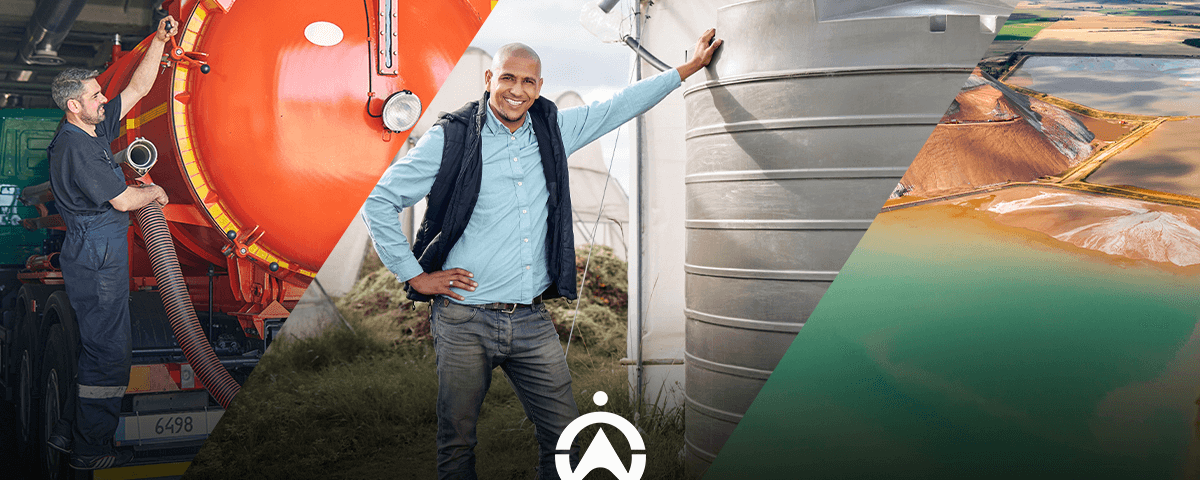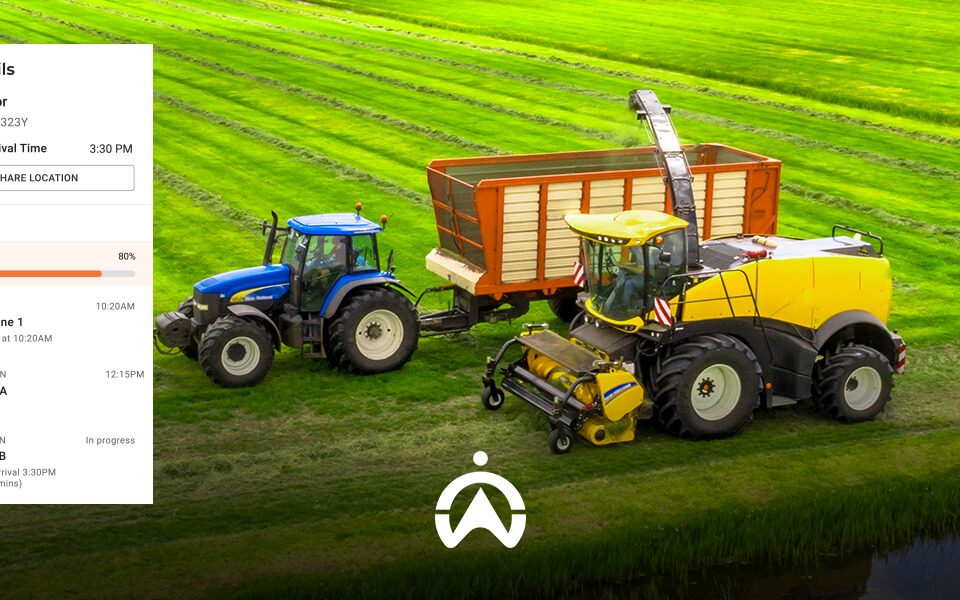Fuel Probes: The Latest Tool You Need to Monitor Fuel and More for Multi-Industries
Did you know that fuel probes can serve more than one purpose?
While their primary function is monitoring fuel levels, these nifty sensors are multi-purpose for multi-industries.
Read on to find out how and discover how a fuel monitoring system is what your business needs, no matter what industry it’s in.
What are fuel probes?
Let’s dive into fuel probes, how they work, and their primary purpose:
- Fuel probes are fuel-measuring devices that use a float system similar to a toilet’s tank float.
- As the fuel levels rise and fall, the float moves up and down along a vertical rod inside the tank.
- The float’s movement is linked to a variable resistor. For example, when fuel levels decrease, the float descends, causing the resistor’s value to increase.
- The fuel probe keeps monitoring the resistance of the variable resistor, and this resistance variation translates to a change in the electric signal sent from the probe.
- The changing signal acts as a fuel level indicator, and the data is wirelessly transmitted to a fleet management system for remote monitoring of fuel levels in real-time.

What else can fuel probes be used for?
While the primary function of fuel probes is to monitor fuel levels, their versatility extends beyond traditional gasoline tanks. Their ability to accurately measure liquid levels makes them valuable tools across various industries. Let’s look at them based on these different industries:
1. Construction and Engineering Industry
The construction and engineering industry includes the planning, designing, and building of physical infrastructure, from roads and bridges to buildings and dams. Let’s look at the fuel probe’s role here:
- Hydraulic fluid management: Heavy machinery like excavators and cranes rely on hydraulic systems for operation. Fuel probes adapted for these systems can continuously monitor hydraulic fluid levels, helping prevent equipment downtime due to low fluid levels and potential damage from overheating.
- Coolant monitoring: Overheating engines can cripple construction projects. Fuel probes can be adapted to monitor coolant levels in construction vehicles and generators.
- Water management: From dust suppression techniques to concrete curing, water plays a vital role on construction sites. Fuel probes can be used to monitor water levels in storage tanks, ensuring a steady supply for various applications. This prevents delays caused by running out of water and optimises water usage, reducing waste.
2. Agriculture and farming:
The agriculture and farming industry cultivates the land to produce food, fibre, and other agricultural products. Let’s look at how fuel probes can be used here:
- Fertiliser and pesticide monitoring: Farms use a variety of liquid fertilisers and pesticides. Fuel probes, modified for compatibility with these specific liquids, can track inventory levels in storage tanks, ensuring farmers have sufficient supplies to avoid disruptions during crucial application periods.
- Water tank monitoring: Farmers relying on boreholes face water access challenges during load shedding, as the water pumps stop working. Fuel probes can be installed into their borehole, allowing them to see their available water. This helps them decide whether they need to pump water before load-shedding windows start.
3. Mining
The mining industry extracts valuable geological resources from the Earth, such as metals, minerals, and fossil fuels, to provide raw materials for various industries and everyday products. Let’s explore fuel probes in this industry:
- Monitoring in-house fuel tanks: Mines typically have fueling stations within their operation for larger machines that are too difficult to fuel up at public fueling stations or because they consume so much fuel that it is cheaper and easier to manage this way. Fuel probes can be installed in their fuel pumps to monitor fuel use.
- Lubrication monitoring: Regular lubrication is crucial for reducing friction and wear in mining equipment. Fuel probes can be adapted to monitor lubricant levels in gearboxes, differentials, and other critical components. Early warnings of low lubricant levels prompt corrective actions, preventing costly equipment breakdowns and potential safety hazards.
- Tailings management: The mining process creates tailings, a mixture of water, rock, and leftover materials. Fuel probes can be used to monitor the level of tailings in storage ponds, which helps ensure proper containment and prevent potential breaches that could lead to environmental contamination.
4. Oil companies
The oil industry is a global network of companies involved in the exploration, extraction, refining, transportation, and marketing of petroleum products. Let’s find out how fuel probes are used in this industry:
- Downhole fluid monitoring: During well drilling, fuel probes can be adapted for high-pressure environments to monitor downhole fluids. These probes measure the level of formation fluids like water, oil, or gas encountered during drilling. This real-time data allows for optimising drilling operations by identifying potential production zones or avoiding unstable formations.
- Leak detection in storage tanks: Fuel probes can be adapted for use in aboveground storage tanks (ASTs) that hold crude oil or refined products. By continuously monitoring liquid levels, these probes can help detect potential leaks early on, allowing for prompt intervention and minimising environmental damage and potential economic losses.
What are the disadvantages of fuel probes?
Fuel probes aren’t without their disadvantages. Let’s look at the four main ones that can impact various industries:
- Accuracy limitations: Fuel probes need to function in a dynamic and harsh environment – the inside of a fuel tank – which can impact accuracy. Fuel tanks come in various shapes and sizes, and some contain internal baffles to prevent fuel from excessively sloshing around during vehicle movement. While helpful, these can impact the fuel probe’s placement and efficiency, leading to inaccurate readings.
- Installation and maintenance: The complexity of installing a fuel probe often leads to high costs and downtime, and to ensure that they provide the most accurate readings, they require regular maintenance and recalibration. This might involve cleaning the float and variable resistor to remove any build-up hindering smooth operation.
- Limited application in certain liquids: Fuel probes that rely on mechanical floats are designed for liquids with a viscosity similar to traditional fuel, which means thicker or thinner liquids can cause inaccurate readings.
Even though fuel probes have some disadvantages, they are outweighed by the advantages and benefits a range of industries get from fuel probe technology. The best way to get the most out of this technology is by implementing a fuel monitoring system.
What is a fuel monitoring system?
A fuel monitoring system is a technological solution designed to track, analyse, and optimise fuel consumption in a fleet of vehicles. It goes beyond simply dipping a stick in a tank; it’s a comprehensive system that provides valuable insights for businesses that rely on vehicles for their operations. Here’s a quick look at the elements needed for a fuel monitoring system to work:
- Fuel level sensors: Installed within each vehicle’s fuel tank, these sensors work to measure the fuel levels inside it continuously.
- Data transmission: The fuel level data that is collected from the sensors is transmitted wirelessly to a central server or cloud platform.
- Software Platform: This is the heart of the system, as it receives, stores, and analyses the fuel level. The platform provides a user-friendly interface to access various features, such as:- Real-time fuel level monitoring: Fleet managers can view the current fuel level of any vehicle in the fleet from a central location.
– Fuel usage reports: The software generates reports on fuel consumption over specific periods, identifying trends and potential areas for improvement.
– Fuel theft detection: Sudden drops in fuel levels that deviate from normal usage patterns can indicate potential fuel theft. The system can trigger alerts for further investigation.
Why do you need a fuel monitoring system?
We could write a whole book on why you need a fuel monitoring system, but for now, we’re giving you a rundown of the 4 top reasons why you need this next-level system:
- To quickly spot fuel theft: Unlike traditional methods that rely on physical inspections—a time-consuming and potentially inaccurate approach—a fuel monitoring system provides real-time data on fuel levels, allowing you to spot theft. Syphoning is one of the most common and damaging fuel theft tactics. With a fuel monitoring system, you can know exactly when, where, and how much fuel was taken from the tank.
- Reduce your business’s fuel wastage: Fuel monitoring systems give you unparalleled insight into exactly how much fuel your vehicles are consuming. By monitoring data on fuel consumption, mileage driven, and litres used per kilometre, you can spot spikes in consumption and pinpoint the reason behind them, whether it be harsh driving, fuel theft, or maintenance issues, making every litre of fuel count.
- Unlock real-time monitoring: Fuel monitoring systems provide detailed reports on fuel levels, consumption, and even alerts for refuelling or draining, enhancing accountability and efficiency. All this information is available at the click of a button, which makes keeping an eye on fuel consumption quick and easy.
- Fuel cost savings: Fuel monitoring systems can help managers spot the source of excessive fuel consumption, making it easier for them to fix the exact problem that has increased fuel expenditure. By identifying these inefficiencies and ensuring vehicles function properly, businesses can save money by lowering fuel costs.

Unlock the power of advanced fuel monitoring with Cartrack’s fuel monitoring solutions
To reap the benefits of fuel management, look no further than Cartrack’s fuel monitoring solution. Let’s unpack this system, how it works, and how it can benefit your business.
How does our fuel sensor system work?
Installed inside your vehicle’s tank by a technician, the fuel sensor acts like a watchful guardian, monitoring fuel levels through a single connected tube. As you refill your tank, fuel fills the tube and surrounding spaces. After three refills, the sensor completes its calibration and becomes operational, measuring all changes in fuel capacity. This information, along with the fuel level in litres, vehicle location, and the tank’s total capacity is then relayed to our telematics system. The gathered data is securely transmitted to the Cartrack platform, where it can be compiled into detailed reports for your convenience.
What does this mean for your business?
- Detailed insights: Take the guesswork out of your fuel consumption measurements with our fuel monitoring system. Our solutions help you know exactly how much fuel you are consuming, unlocking a new level of accuracy and eliminating costly human error.Let’s look at John, who no longer has to manually check all his vehicles’ petrol and odometer readings at the end of each day to determine how much fuel was consumed. John can now get this information through convenient, easy-to-read reports sent straight to his email.
- Improved efficiency: When you have all these detailed insights at your fingertips, you can plan your operations more efficiently. Take John again, who now knows exactly how much fuel he needs for his fleet to function efficiently. This information helps him ensure his vehicles have enough fuel to operate throughout the day, which eliminates downtime, ensures that unnecessary petrol station stops are avoided, and improves productivity.
Cartrack Namibia: The multi-industry tool your business needs
Are you ready to take the guesswork out of manually tracking fuel consumption? Unlock accuracy and convenience with Cartrack’s solutions, no matter what industry you’re in.
Contact us today and give your business the gift of next-level monitoring.




